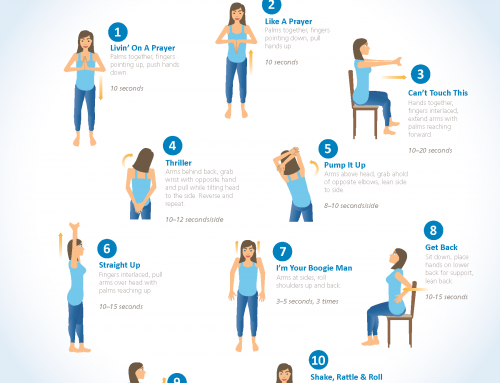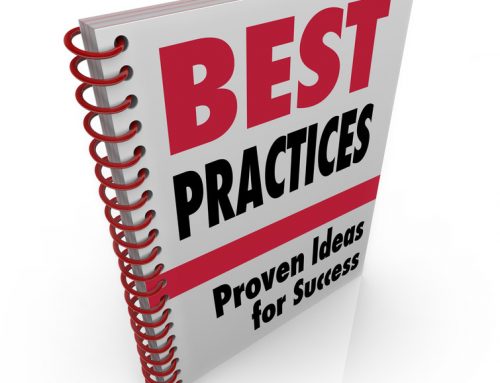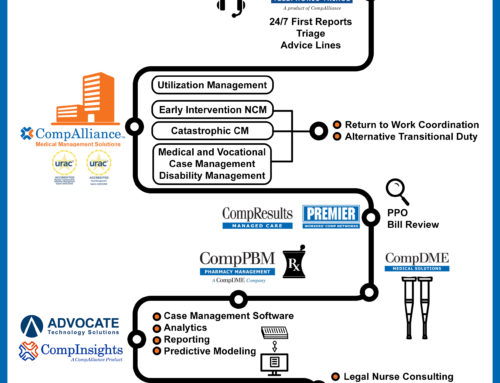In Part 1 of this series I discussed the completion of the IAIABC Return to Work paper and whether we as a workers’ compensation community need to ultimately focus on Return to Function or Return to Work. We also defined the stakeholders we believe that are in the Workers’ Compensation universe. We determined after failing at obtaining solutions (from the stakeholders) to the barriers existing in the Return to Work process, that a Plan B was needed.
During our committee meetings we believed that once we have researched and defined the common perceptions and misconceptions, we can start addressing the true reality.
Many stakeholder groups in the US don’t recognize that return to work is a return on investment or the benefits it can offer to them, so our RTW committee set out to do that. Why SHOULD stakeholders care about promoting return to work? We decided to share the benefits of embracing and promoting return to work into “what’s in it for me” terms.
So, let’s look at each stakeholder group, and talk about the common perceptions, misconceptions and their “what’s in it for me?” and a best practice statement by the IAIABC. I will address each group individually in subsequent posts. Please refer to my post dated 9/26/2018 for the list of stakeholders we identified.
Injured Workers / Unions
Injured workers can be perceived to be lazy, taking advantage of the system, embellishing their injury, and that they don’t want to work and are using the injury as a vacation – that they would rather sit at home playing on their phone or watching TV than work. There is the also the common perception that unions are defending the workers’ right to compensation for their injury and resist early return to work to modified duty position.
Why should injured workers and their unions care about RTW? Workers’ compensation only covers a portion of the earned income and there is usually a ceiling – typically about 66% of pre-tax earnings up to the state’s average weekly wage. So, an injured worker with lost time would see some loss of income.
Workers that do not RTW experience a significant reduction in their overall income. There is a potential for delayed RTW and/or RTW to an inappropriate position due to absent or delayed communications with employers or the claims professional.
The longer a worker is off work, the greater the impact is on their long-term earnings. In a recent study done by Washington State, injured workers with less than 3 months of lost time lost an average of 3.5% of earning capacity over a 10-year period. From 3-12 months, that number increases to 11.6%, and more than 3 years, is at 28%.
For return to function, feelings of loss of self-worth grow the longer a worker is away from their job and as their ability to provide for their family and contribute to their community declines.
In a companion study by Washington State, the probability for RTW declines significantly each quarter an injured is not returned to work.
What works?
The worker should take an active role in developing the return to work plan with the insurer, employer, and physician. Worker buy-in with the plan is necessary to ensure its success. The worker should seek additional resources (e.g., addiction services, counseling, etc.) if they are having difficulties following a work injury. Asking for help if needed is an important part of the recovery process. Finally, the worker should communicate his or her return to work plans and progress with family and friends. This will help provide accountability for the worker, as well as a strong support system during this difficult time.
Labor unions can play a role in return to work as well. It is important for unions to understand the inherent benefits of return to work and function, so they can carry the message to their membership, helping shift the culture within the labor force. Unions can use their influence with employers to encourage the hiring of return-to-work coordinators or staff with experience in workplace disability management.
In collective bargaining, they can support the development of return-to-work programs by including this need in their negotiations. Collective bargaining might also include language encouraging flexibility for temporary light-duty jobs to keep workers actively engaged.
For example, an article in the August 2018 IAIABC Perspectives Magazine details an Alternative Dispute Resolution (ADR) Program in California. The programs are also called “carve out programs” as the claims involved are carved out of the Workers’ Compensation Appeals Board. There are to be an alternative system for a select group of union employers. The intent was to reduce w/c costs for union employers. Construction union bargaining groups were on board as the thought was reduced costs would increase union jobs.
Types of Systems (all must go through steps for approval by the State of California and the Division of Workers’ Compensation
- Group of employers and a specific bargaining unit
- One large employer and one bargaining unit
- Single employer on a very large construction project with multiple trades
Key Elements
- Agreed list of medical providers
- All treatment must be provided by physicians from this list. Injured workers treating outside of this list may not qualify for disability benefits. Non-approved physicians or other treatment providers may not be able to receive reimbursement
- The lists are jointly agreed to by the participants in the development of the ADR program
- There is an established agreed upon list of Qualified Medical Examiners to resolve medical disputes
- Have Light Duty, Modified Duty and RTW programs
- List of Vocational Providers (seldom used)
Key Steps
- Any concerns are reviewed by the ombudsperson. They are not a party to the claim and can talk to everyone involved in the claim. There are no ex parte concerns. They can explore with all parties any available avenue to resolve the dispute.
- Mediation is used if the ombudsperson is unable to resolve a dispute.
- Arbitration is used in a trial setting. Has same powers as a w/c judge. Any aggrieved party has the right to appeal to the W/C appeals Board at the state level in San Francisco.
In reality, most disputes are handled at the ombudsperson level.
In summary, the injured worker should actively work to understand workplace policies, plans and procedure, be responsive to requests from their employer and the workers’ compensation claims team, participate in their medical treatment, limit use of narcotics (opioids), COMMUNICATE, and the union should participate in discussions to support and encourage RTW.
“Injured workers must be their own best advocate. With the support of their unions, they must encourage their employer and doctor to make return-to-work a top priority, while they continue to heal. Without a speedy return-to-work option, the worker is at greater risk of long-term disability and diminished quality of life.”
Don’t think we are only picking on the Injured Worker and their Union. Paradigm shifting ideas will be addressed for each stakeholder group in subsequent posts.




